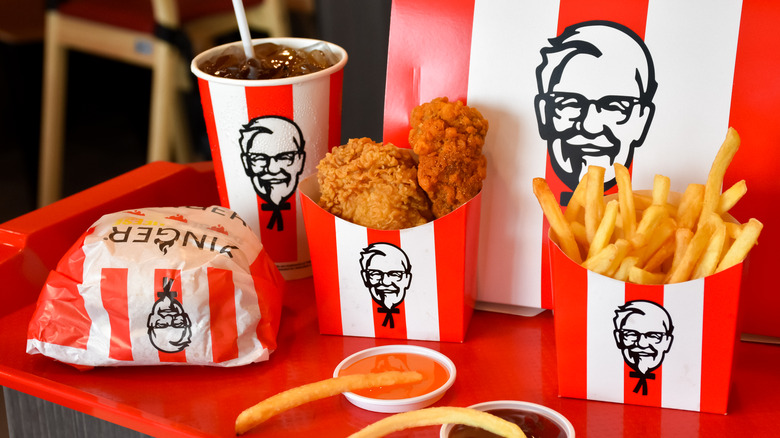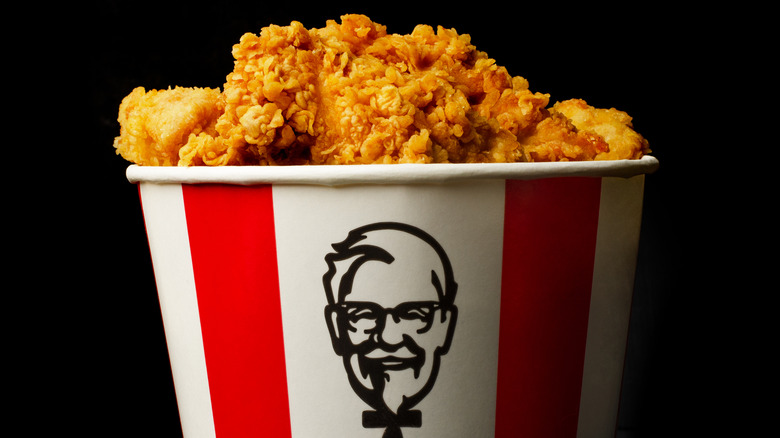How KFC Got Its Famous Slogan
These days, it's hard to find anyone who hasn't at least heard of fast food giant KFC. The brand, which stands for Kentucky Fried Chicken, has long stood out in the fast food chicken market, though it's met some competition from chains like Popeye's and Chick-fil-A. KFC of course got its start decades ago, when Colonel Sanders opened the first franchise in Salt Lake City, Utah. According to KFC's website, Sanders spent years perfecting his secret blend of 11 herbs and spices, which are used to give the chicken its iconic flavor. From there, he traveled around the country working to open various KFC franchises, and he worked hard to build the company up until he retired in 1964. He sold the company to investors but has always remained the face of KFC; fans of the fried chicken will be familiar with him on the company's logo.
But beyond Colonel Sanders' face, there is another recognizable part of this fried chicken brand: its finger-lickin' good slogan. Oddly enough, it turns out that the formation of KFC's well-known tagline was somewhat of an accident.
KFC's slogan was created from an impromptu response
Legend has it that KFC's "It's finger-lickin' good!" slogan was created in response to an offended customer. According to Creative Review, Dave Harman, who owned a Phoenix KFC franchise, used to regularly voice television commercials promoting his KFC. However, upon having a stroke, Harman was left with a speech impairment, so his restaurant manager, Kan Harbough, stepped in to do the voiceovers in his place. Rather than give up on the commercials altogether, Harman opted to sit in the background of filming, eating a plate of fried chicken.
Once the ad started to run, someone called the TV station to voice a complaint: They were appalled at Harman licking his fingers in the background of the commercial. Without thinking, Harman replied, "Well, it's finger lickin' good," and it instantaneously became the tagline for the whole franchise. To this day, the slogan remains as-is, all thanks to one viewer's complaint.

